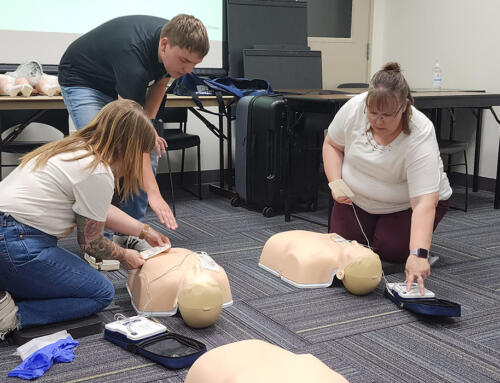The United States Secret Service in their report Safe School Initiative states, “most attackers engaged in some behavior, prior to the incident that caused concern or indicated a need for help.” This suggests that some acts of school violence could have been prevented had the warning signs been recognized.
While there is no foolproof system for identifying potentially dangerous students who may harm themselves and/or others, the following checklist from The National School Safety Center provides a starting point.
- Has a history of tantrums and uncontrollable angry outbursts.
- Characteristically resorts to name calling, cursing or abusive language.
- Habitually makes violent threats when angry.
- Has previously brought a weapon to school.
- Has a background of serious disciplinary problems at school and in the community.
- Has a background of drug, alcohol or other substance abuse or dependency.
- Is on the fringe of his/her peer group with few or no close friends.
- Is preoccupied with weapons, explosives or other incendiary devices.
- Has previously been truant, suspended or expelled from school.
- Displays cruelty to animals.
- Has little or no supervision and support from parents or a caring adult.
- Has witnessed or been a victim of abuse or neglect in the home.
- Has been bullied and/or bullies or intimidates peers or younger children.
- Tends to blame others for difficulties and problems s/he causes her/himself.
- Consistently prefers TV shows, movies or music expressing violent themes and acts.
- Prefers reading materials dealing with violent themes, rituals and abuse.
- Reflects anger, frustration and the dark side of life in school essays or writing projects.
- Is involved with a gang or an antisocial group on the fringe of peer acceptance.
- Is often depressed and/or has significant mood swings.
- Has threatened or attempted suicide.
According to The National School Safety Center, “These characteristics should serve to alert school administrators, teachers and support staff to address needs of troubled students through meetings with parents, provision of school counseling, guidance and mentoring services, as well as referrals to appropriate community health/social services and law enforcement personnel.”
The Student Threat Assessment Program, administered by ESD 112, can provide threat assessment services to school districts. The threat assessment process focuses on factors that may influence a student to threaten and/or act in a dangerous way. The Threat Assessment team also provides recommendations with the goal of developing a safety and support plan for students and the school community.




